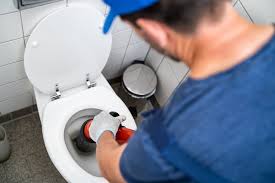Dealing with a clogged toilet is frustrating, especially when your trusty plunger fails to do the job. If you’ve found yourself in this situation, don’t panic. There are several reasons why a plunger doesn’t unclog a toilet, and even more solutions to try. Below, we’ll explore the common causes and step-by-step fixes to get your toilet flowing smoothly again.Why Your Plunger Isn’t WorkingBefore trying alternative methods, it’s important to understand why the plunger isn’t effective. Here are some possible reasons:
- Incorrect Plunger Type: Not all plungers are created equal. A standard cup plunger works well for sinks, but a flange plunger is better for toilets.
- Poor Seal: If the plunger isn’t creating a tight seal around the drain, it won’t generate enough suction.
- Hard or Large Obstruction: Some clogs are too stubborn or large for a plunger to dislodge.
- Improper Technique: Plunging requires a specific motion—rapid pushes and pulls—to be effective.
Step-by-Step Solutions When a Plunger FailsIf your plunger doesn’t unclog the toilet, try these methods in order:
- Check the Plunger Seal: Ensure the plunger fully covers the drain hole. Add water if needed to improve suction.
- Use a Toilet Auger: Also called a closet auger, this tool reaches deeper into the pipes to break up or retrieve clogs.
- Try Hot Water and Dish Soap: Pour a mixture of hot water (not boiling) and dish soap into the bowl. Let it sit for 15 minutes before flushing.
- Use a Wet/Dry Vacuum: If you have one, use it to suction out the clog. Be sure to remove all water first.
- Chemical Drain Cleaners (Cautiously): These can dissolve organic clogs but may damage pipes if overused.
Preventing Future ClogsTo avoid repeat scenarios where your plunger doesn’t unclog the toilet, follow these tips:
- Avoid flushing non-flushable items like wipes, paper towels, or feminine products.
- Use less toilet paper, especially in older plumbing systems.
- Regularly maintain your pipes with enzyme-based cleaners.
- Consider upgrading to a high-pressure or low-flow toilet if clogs are frequent.
When to Call a ProfessionalIf none of the above methods work, the clog might be deeper in the sewer line. Signs you need a plumber include:
- Multiple drains in your home are slow or backed up.
- You notice foul odors or gurgling sounds from drains.
- Water backs up into other fixtures when you flush.
Remember, a plunger doesn’t always unclog a toilet, but that doesn’t mean you’re out of options. With the right tools and techniques, you can tackle even the toughest blockages.

